OK OÖ Kulturquartier

Voices from AI in Experimental Improvisation
Tomomi Adachi (JP), Andreas Dzialocha (DE), Marcello Lussana (IT)
Through machine learning, computers can recognize patterns in a variety of sound documents. But can they also learn to improvise musically? The software “Tomomibot” tries it out by interacting in real time with the sound artist Tomomi Adachi, using deep learning techniques. The Artificial Intelligence (AI) "learns" the artist’s individual style via voice recordings and directly confronts him with the newly generated material. Their joint performance shows how interactive technology and AI can influence a (vocal) style. However, this dialogue also makes clear that the artist will always be more creative and unpredictable than his mechanical counterpart.
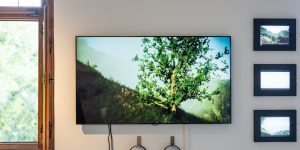
Resurrecting the Sublime
Christina Agapakis (US)/Ginkgo Bioworks, Alexandra Daisy Ginsberg (UK), Sissel Tolaas (NO)
The Hibiscadelphus wilderianus was once indigenous to the southern slopes of Mount Haleakalā in Maui, Hawaii, before colonial cattle ranching destroyed the plant's habitat. Resurrecting the Sublime reconstructs the smell of this hibiscus which was last seen in 1912, along with two other extinct species, the Orbexilum stipulatum, and the ‘Leucadendron grandiflorum (Salisb.) R. Br.’
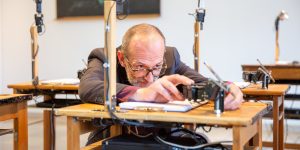
Human Study #4, La Classe
Patrick Tresset (FR)
Nine robots act as stylized pupils in the "classroom." They learn to pass the time and obey the teacher during the lesson represented in theatrical performance. Even after revolting, they get back in line to follow what is being taught. Childhood memories, Jacques Tati, Theodor W. Adorno and Michel Foucault influenced Patrick Tresset for this art installation.
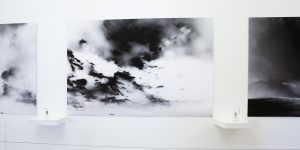
Carbon Black (aka A Particular Matter)
Anaïs Tondeur (FR)
Despite the absence of industry, the inhabitants of Fair Isle suffer from respiratory problems. When Anaïs Tondeur visited the island, she retraced the itinerary of the particulate matters she encountered and could define the site of emission of the particles through emissions analyses and backflow models.
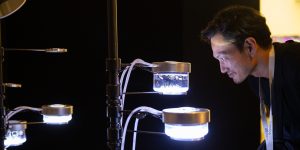
Confronting Vegetal Otherness: Phytoteratology
Špela Petrič (SI)
Špela Petrič received an award for her three-part series Confronting Vegetal Otherness in which she deals with different forms of exchange between humans and plants. Her project Phytoteratology is a molecular performance in which plant embryos are grown in artificial wombs in lieu of seeds.
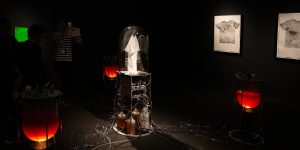
Labor
Paul Vanouse (US)
How does work smell? Labor is a dynamic, self-regulating art installation in which the smell of sweat is produced without any human effort. The body odor is artificially produced in glass bioreactors in which special human skin bacteria grow. While these bacteria metabolize simple sugars and fats, they produce smells reminiscent of human sweat. A white T-shirt in the center of the installation picks up the "scent" and stores it in its fibers. Paul Vanouse's "sweat stain prints” shown in the exhibition, are also based on the sweaty T-shirt – the icon of wage labor, stress and exploitation: Freshly sweaty shirts were dusted with charcoal and pressed between paper under high pressure.
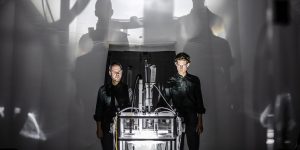
Polar Force
Speak Percussion, Philip Samartzis (AU), Eugene Ughetti (AU)
Polar Force is a phenomenological investigation of the windiest, coldest, and driest continent on earth: Antarctica. During the one-hour work, vivid multichannel Antarctic field recordings of wind, water, and ice are combined with new instruments, sampled in a live performance and a choreographed artistic “lecture” undertaken by two performers reminiscent of scientists in a remote polar field station. The immersive live performance merges the art-science-tech to comment on geopolitical issues and the climate crisis.
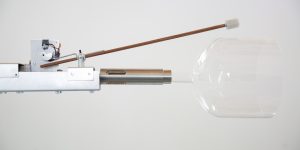
Smart.ing Bodies
Evelina Rajca (PL)
Sand, or to put it more precisely high-purity silicon dioxide particles, is the essential raw material from which we make concrete, glass, fiberoptic cables, computer chips, and other high-tech hardware. The installation Smart.ing Bodies features “glass instruments” made of quartz sand that Evelina Rajca collected from disappearing beaches and mountains around the world. The multisensory sound installation consists of those two glass resonators, sensors, motors, and an algorithmic composition created partly by AI learning processes. In order to keep on playing and to avoid a “resonance disaster” (the destruction of the glass or motor), the algorithmic program has to learn to conduct a variety of smart frequencies. What can be heard is the sound of sand, which is pure yet complex and ever-changing.
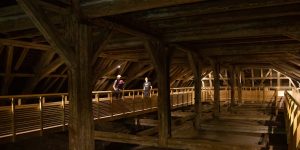
MANTRAcks and Sonic Fields: A VirtuAural Duology Part 1 – untitled #352
Francisco López (ES)
Industry and nature are the opposing starting points for this long-term sound meta-piece, which originally consisted of two parts. The ten-channel audio installation untitled #352 was specially adapted for the attic of the Ursulinenkirche: Complex layers of sound, recorded in Fontenay-sous-Bois near Paris, develop further and are distilled into expansive electronic mantras (“MANTRAcks”).
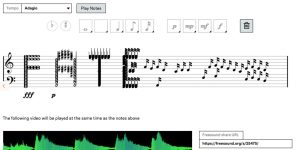
Wiki-Piano.Net
Alexander Schubert (DE)
Wiki-Piano.Net is a composition for piano that can be co-designed by internet users. Everything that the community has made available on the website will be performed on stage. This can be not only music, but also texts, images, or other content. For the musical realization of this score, the performing pianist has piano, keyboard, and his own voice at his disposal. It is not possible to study and practice this composition in the classical sense, but it is not the masterpiece either that is in the foreground of this project. Rather, it is a matter of continuous observation and playful exploration of community behavior and internet use.


